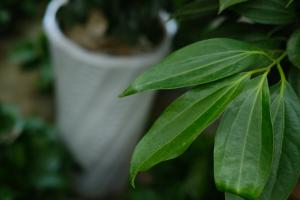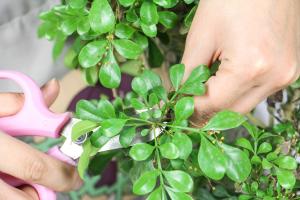How to Care for a Rattlesnake Plant
Rattlesnake plants, also known as calathea lancifolia, are a popular choice among indoor plant enthusiasts for their unique and striking foliage. This plant is native to the rainforests of Brazil, and it requires specific conditions to thrive. Proper care is essential to keep your rattlesnake plant healthy and vibrant.
Light Requirements
Rattlesnake plants prefer bright, indirect light. Direct sunlight can scorch their delicate leaves, while low light can lead to leggy growth and a lack of vibrancy in the foliage. Place your plant near a north or east-facing window to ensure it receives enough light. If you have a south or west-facing window, use a sheer curtain to diffuse the sunlight.
Watering
Water your rattlesnake plant once a week, making sure not to overwater it. Overwatering can cause the roots to rot and damage the foliage. Check the soil moisture level by sticking your finger about an inch into the soil. If it feels dry, it's time to water. Use room temperature water to prevent shocking the roots.
Humidity
Rattlesnake plants require high levels of humidity to thrive. The ideal humidity level for these plants is between 50-60%. You can increase humidity by placing a tray of water near the plant or using a humidifier. If your home is particularly dry, mist the leaves of your plant once a day to keep them hydrated.
Temperature
Rattlesnake plants prefer temperatures between 60-80掳F, making them a perfect indoor plant. Avoid placing your plant near drafts or air conditioning vents, as they can cause temperature fluctuations that the plant may find challenging to tolerate.
Fertilization
Fertilize your rattlesnake plant once a month during the growing season (spring and summer). Use a balanced liquid fertilizer diluted to half strength. Avoid fertilizing your plant during the dormant season (fall and winter).
Pruning
Prune your rattlesnake plant regularly to keep it healthy and compact. Remove any yellow or brown leaves, as these are a sign of stress or disease. Trim back overgrown foliage to promote new growth.
Pest Control
Rattlesnake plants are susceptible to pest infestations, including spider mites and mealybugs. Inspect your plant regularly for signs of pests, such as webbing or tiny white bugs on the leaves. If you notice a pest problem, isolate the plant and treat it with a gentle insecticidal soap.
In conclusion, rattlesnake plants are a beautiful addition to any indoor plant collection. With proper care and attention, your plant will thrive and provide you with years of enjoyment. Remember to avoid overwatering, provide high levels of humidity, fertilize regularly, and inspect for pests. With these simple steps, you can care for your rattlesnake plant with ease.

 how many times do yo...
how many times do yo... how many planted tre...
how many planted tre... how many pine trees ...
how many pine trees ... how many pecan trees...
how many pecan trees... how many plants comp...
how many plants comp... how many plants can ...
how many plants can ... how many plants and ...
how many plants and ... how many pepper plan...
how many pepper plan...






























